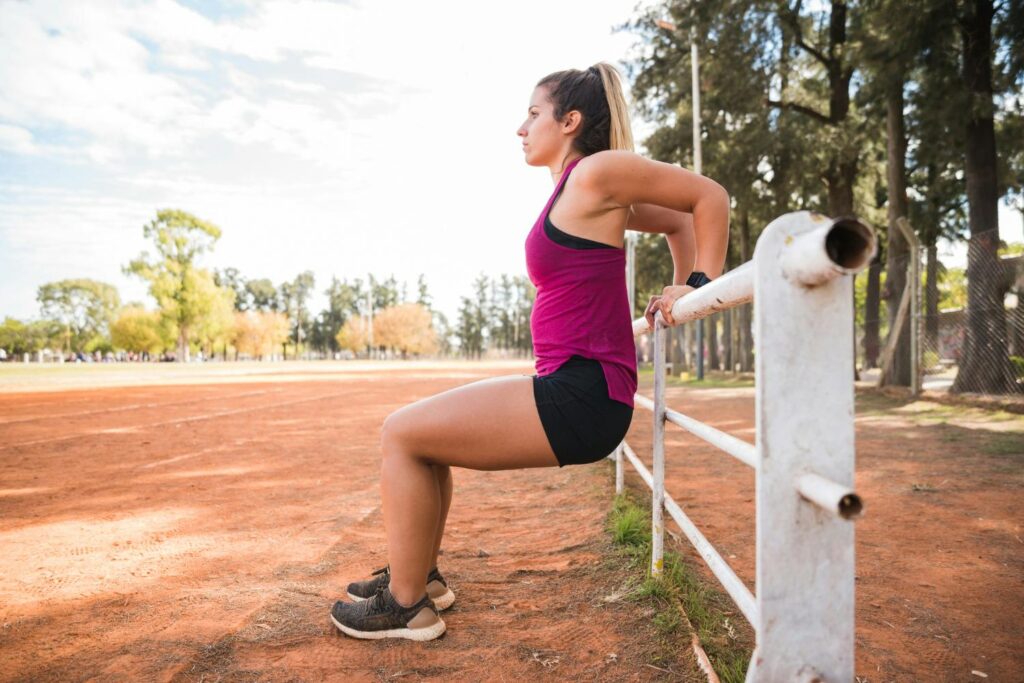Introduction
Lower back pain when running is a common nuisance among runners, which can stem from various factors that disrupt the harmonious movement of the musculoskeletal system. From the imbalance of muscle groups, like the hip flexors and core muscles, to incorrect running shoes, the reasons for this discomfort can impact one’s physical activity profoundly.
Muscles in the lumbar region and pelvic tilt work as shock absorbers during a run, yet when they experience strain or spasms, the consequence is often pain. Runners with poor posture or those engaging in repetitive stress without adequate rest are especially at risk.
Additionally, factors such as a lack of flexibility, weak gluteal muscles, tight hamstrings, and inadequate strength training can contribute to the imbalance that leads to lower back pain. Joint dysfunction and nerve compression in the spine are also potential culprits.
Understanding these dynamics is crucial for runners to prevent injury and enhance their performance. By addressing muscle imbalances and incorporating preventive measures, such as core strengthening and proper stretching, runners can hope to maintain a healthy range of motion and not suffer from back pain from running.
Understanding Lower Back Pain When Running
Here are some of the most common causes of lower back pain from running that you can watch out for.
Muscle Imbalances and Core Stability:
- Weak core muscles and muscle imbalances, particularly around the hip flexors and gluteal muscles, can lead to lower back pain.
- Strength training can assist in correcting imbalances and building a resilient core, essential for shock absorption.
Footwear and Running Posture:
- Poorly fitted running shoes and poor posture can exacerbate the risk of injuries, including lower back pain.
- Ensuring proper footwear and working on maintaining a good posture during physical activity can alleviate stress on the lumbar spine.
Flexibility and Rest:
- Lack of flexibility and insufficient rest days can contribute to muscle tension and spasms.
- Incorporating static stretches and allowing for adequate recovery time promotes blood flow and helps prevent repetitive stress injuries.
Pelvic Alignment and Spinal Health:
- An anterior pelvic tilt and joint dysfunction in the facet joints may cause pain.
- Regular aerobic exercise and attention to pelvic and upper body alignment can help maintain spine health and reduce joint pain.
Remember, addressing these aspects is vital not only for pain mitigation but also for enhancing overall running performance.
How Common is it for Runners
Lower back pain among runners is a familiar complaint and can often be attributed to a number of the factors typically encountered during regular running routines. Running, as a high-impact aerobic exercise, inherently carries a risk of injuries, including those of the lower back, which can affect runners of all levels.
Why does lower back pain happen when running?

Lower back pain during running can have multiple triggers. Often it’s a case of overuse, where the repetitive high-impact of feet pounding the pavement leads to muscle fatigue and strain. The lower back muscles, responsible for supporting the upper body, might get overstretched or torn, causing muscle strain.
Muscle imbalances also contribute to back pain. This occurs when some muscles work harder than others, resulting in an uneven pull on the spine. Facet joints, the small stabilizing joints in the spine, can become irritated due to imbalances or overuse, leading to pain.
Another common cause could be Sacroiliac (SI) joint pain, which arises when the joints that link the spine to the pelvis experience stress or movement alterations.
Lastly, nerve compression or irritation, often stemming from spinal structures, can manifest as lower back pain in runners. Ensuring proper technique, adequate strength and flexibility, and appropriate gear are all critical in mitigating these risks.
Here’s a quick breakdown of potential lower back issues for runners:
| Cause | Description |
| Overuse | Repetitive stress leading to strain |
| Muscle Strains | Overstretched or torn-back muscles |
| Muscle Imbalances | Unequal muscle support to the spine |
| Facet Joint Irritation | Inflammation of spine-stabilizing joints |
| SI Joint Pain | Stress on joints between the spine and pelvis |
| Nerve Issues | Compression or irritation from spinal structures |
Signs and Symptoms of Lower Back Pain When Running
Experiencing lower back pain while running can greatly disrupt your physical activity and signal that your body is facing stress or injury. To recognize and address lower back pain effectively, it’s essential to be aware of the signs and symptoms commonly associated with this condition.
Lower Back Pain Worsens with Bending
One telltale sign that runners may notice is an increase in pain in the lower back area during activities that involve bending or twisting motions. This pain may become more pronounced during certain movements, signaling that the muscles, facet joints, or other components of the lower back are in distress.
Tightness and Soreness in the Lower Back
Runners often report a feeling of tightness or soreness in their lower back muscles. This discomfort is typically a result of muscle strain or overuse from repeated running activity. It can lead to muscle tension that aggravates the pain, emphasizing the need for strength training, regular stretching, and proper rest.
Localized Tender Spot
Sometimes, the pain can become localized to a specific tender spot on the lower back, which can be sensitive to touch or pressure. This localized tenderness can indicate a muscle spasm or strain, which can be exacerbated by continuous running without adequate muscle support or rest.
Lack of Power When Running
Lower back pain may also manifest as a noticeable lack of power or stability when running. This could be due to muscle weakness or imbalances in the core muscles, including the gluteal muscles and hip flexors, which act as shock absorbers and stabilizers during running. When these muscles are not functioning optimally, it can affect your running performance and increase the risk of injuries.
Expert Tips for Preventing Lower Back Pain When Running
To prevent lower back pain when running, consider following these tips:
- Warm-up & Cool-down: Begin with dynamic stretches to increase blood flow and prepare muscles for the demands of running. Post-run, engage in a cool-down routine to gradually reduce heart rate and muscle temperature.
- Proper Running Form: Maintain an upright posture and avoid slouching. Keep your head aligned with your spine, and let your arms swing naturally.
- Listen to Your Body: If you experience discomfort, lessen intensity or stop. Overtraining can lead to muscle strain and joint pain. Schedule rest days to allow for recovery.
- Strength Training: Incorporate exercises targeting core muscles, gluteal muscles, and hip flexors to correct muscle imbalances and reinforce muscle groups that support the lower back.
- Stretching and Flexibility: Implement static stretches to enhance the range of motion and reduce muscle tension. Focus on areas prone to tightness such as hip flexors and hamstrings.
- Run on Proper Terrain: Opt for surfaces that can act as shock absorbers, like grass or dirt trails. Uneven or hard surfaces can increase repetitive stress on the lumbar spine.
- Stay Hydrated: Adequate hydration ensures nutrients reach the muscles, reducing the risk of muscle spasms and facilitating aerobic exercise efficiency.
Adhering to these tips can not only improve running performance but also reduce the risk of lower back pain, ensuring a more enjoyable and sustainable running experience.
Other ways to speed up healing if experiencing lower back pain from running

When experiencing low back pain from running, aside from the preventive measures, there are several effective ways to speed up the healing process. Learning how to fix lower back pain from running is crucial for any runner. This involves adopting strategies that not only alleviate pain but also address the root causes to prevent future occurrences.
Don’t stop moving:
- Gentle activities can maintain blood flow and promote healing. Try walking or other low-impact exercises.
Over-the-counter medicine:
- NSAIDs (like ibuprofen) can reduce inflammation and alleviate pain. Always follow the recommended dosage.
Hot and cold packs:
- Use cold packs for the first few days to reduce swelling. Afterward, switch to heat to relax muscles and enhance circulation.
Physical therapy:
- A structured program can restore function, teaching exercises that strengthen the back and correct postural issues.
Remember, while these methods can aid recovery, consult a healthcare professional if the pain persists or worsens.
Consider Consulting Be Ready Performance Therapy
If you’re struggling with lower back pain during or after running, it might be time to consult with the experts at Be Ready Performance Therapy. With a focus on runners and athletic individuals, we specialize in identifying and treating pain caused by various factors, including muscle imbalances or repetitive stress.
Our approach targets key areas often implicated in lower back pain for runners, such as the core muscles, hip flexors, and gluteal muscles. Since every runner’s body and experience are unique, we offer personalized assessments to pinpoint the root cause of discomfort, which could range from joint dysfunction to muscle strain or even nerve compression. Contact us today at Be Ready Performance Therapy for physical therapy in Nashville, TN, and other neighboring cities.
Conclusion
Lower back pain when running is a common issue that can stem from a variety of causes, ranging from muscle imbalances to improper footwear. Runners must listen to their bodies and seek expert advice when necessary. Addressing concerns such as core stability, flexibility, posture, and muscle strength are paramount in overcoming discomfort. By taking a proactive approach to lower back pain, you can not only alleviate current pain but also prevent future injuries, ensuring that you continue to enjoy running as a healthy and beneficial form of aerobic exercise.
FAQs
How do I stop my lower back from hurting when I run?
To stop your lower back from hurting when you run, it is important to take a holistic and ergonomic approach. One key aspect is to focus on improving your posture and reducing strain on your back.
Strengthening and stretching exercises for your back and legs can also help alleviate pain. This includes exercises like kettlebell squats, planks, and glute bridges to strengthen your glutes, quads, and lower back, as well as stretches like downward facing dog and child’s pose to stretch and release your lower back.
Is it OK to run with lower back pain?
Running with lower back pain is not recommended as it can exacerbate the issue and lead to longer recovery times or more serious injuries. Listen to your body and take a break if you’re experiencing pain. Focus on addressing the underlying causes of the pain, such as muscle strain or joint dysfunction, before gradually returning to your normal running routine.
Why does my lower back hurt when I run hard?
When running hard, many factors can contribute to lower back pain. One possible reason is a lack of core strength, as the core muscles may not be strong enough to provide adequate support for the spine. Weakness in the back muscles can also contribute to lower back pain, as running primarily strengthens the muscles in the abdomen and lower limbs while neglecting the upper back muscles.
Additionally, conditions such as a herniated disc or poor posture can lead to lower back pain when running. It is important to identify the specific cause of the pain to determine the appropriate treatment.


